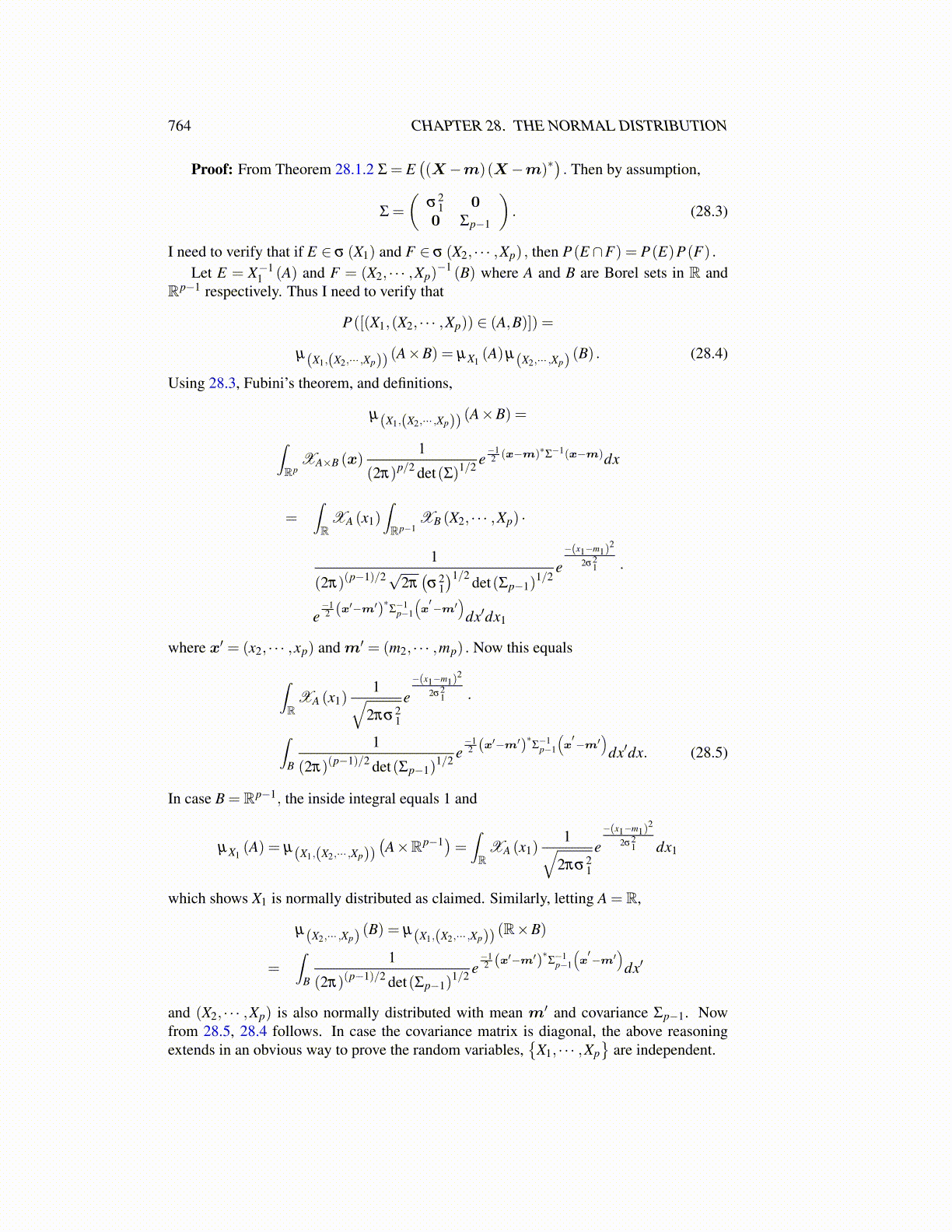
764 CHAPTER 28. THE NORMAL DISTRIBUTION
Proof: From Theorem 28.1.2 Σ = E((X−m)(X−m)∗
). Then by assumption,
Σ =
(σ2
1 00 Σp−1
). (28.3)
I need to verify that if E ∈ σ (X1) and F ∈ σ (X2, · · · ,Xp) , then P(E ∩F) = P(E)P(F) .
Let E = X−11 (A) and F = (X2, · · · ,Xp)
−1 (B) where A and B are Borel sets in R andRp−1 respectively. Thus I need to verify that
P([(X1,(X2, · · · ,Xp)) ∈ (A,B)]) =
µ(X1,(X2,··· ,Xp)) (A×B) = µX1(A)µ(X2,··· ,Xp) (B) . (28.4)
Using 28.3, Fubini’s theorem, and definitions,
µ(X1,(X2,··· ,Xp)) (A×B) =∫Rp
XA×B (x)1
(2π)p/2 det(Σ)1/2 e−12 (x−m)∗Σ−1(x−m)dx
=∫R
XA (x1)∫Rp−1
XB (X2, · · · ,Xp) ·
1
(2π)(p−1)/2√2π(σ2
1
)1/2 det(Σp−1)1/2
e−(x1−m1)
2
2σ21 ·
e−12 (x
′−m′)∗Σ−1p−1
(x′−m′
)dx′dx1
where x′ = (x2, · · · ,xp) andm′ = (m2, · · · ,mp) . Now this equals
∫R
XA (x1)1√
2πσ21
e−(x1−m1)
2
2σ21 ·
∫B
1
(2π)(p−1)/2 det(Σp−1)1/2 e
−12 (x
′−m′)∗Σ−1p−1
(x′−m′
)dx′dx. (28.5)
In case B = Rp−1, the inside integral equals 1 and
µX1(A) = µ(X1,(X2,··· ,Xp))
(A×Rp−1)= ∫
RXA (x1)
1√2πσ2
1
e−(x1−m1)
2
2σ21 dx1
which shows X1 is normally distributed as claimed. Similarly, letting A = R,
µ(X2,··· ,Xp) (B) = µ(X1,(X2,··· ,Xp)) (R×B)
=∫
B
1
(2π)(p−1)/2 det(Σp−1)1/2 e
−12 (x
′−m′)∗Σ−1p−1
(x′−m′
)dx′
and (X2, · · · ,Xp) is also normally distributed with mean m′ and covariance Σp−1. Nowfrom 28.5, 28.4 follows. In case the covariance matrix is diagonal, the above reasoningextends in an obvious way to prove the random variables,
{X1, · · · ,Xp
}are independent.